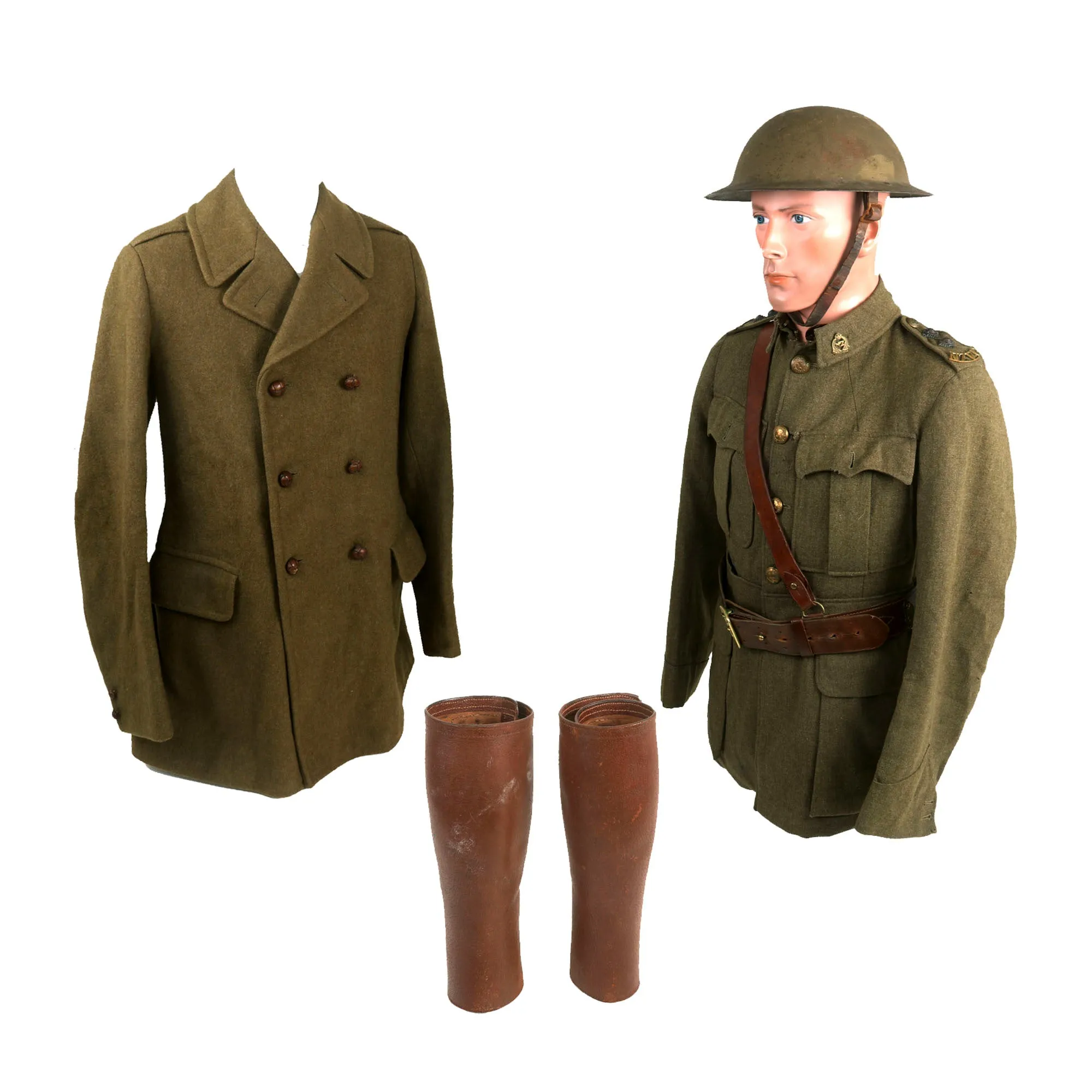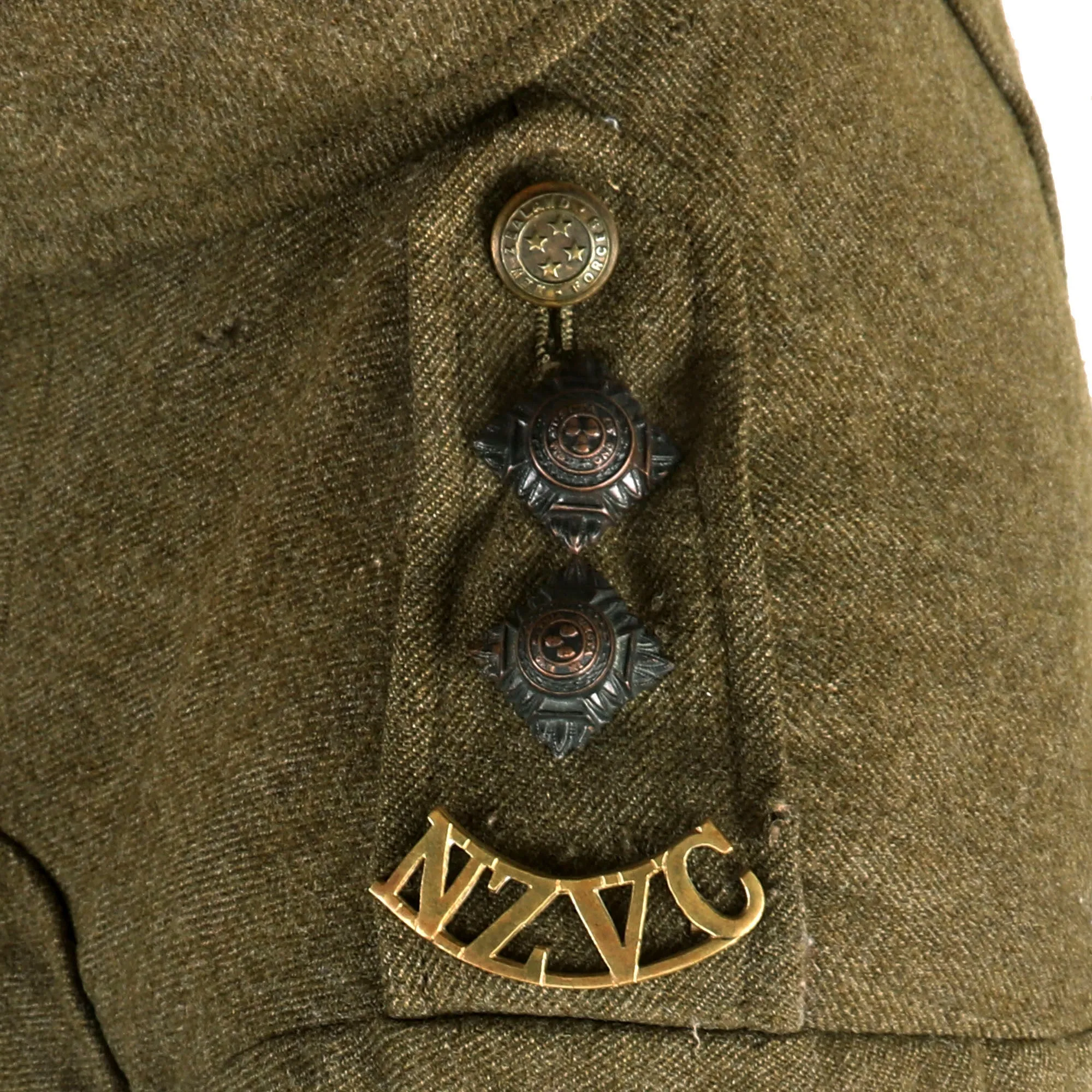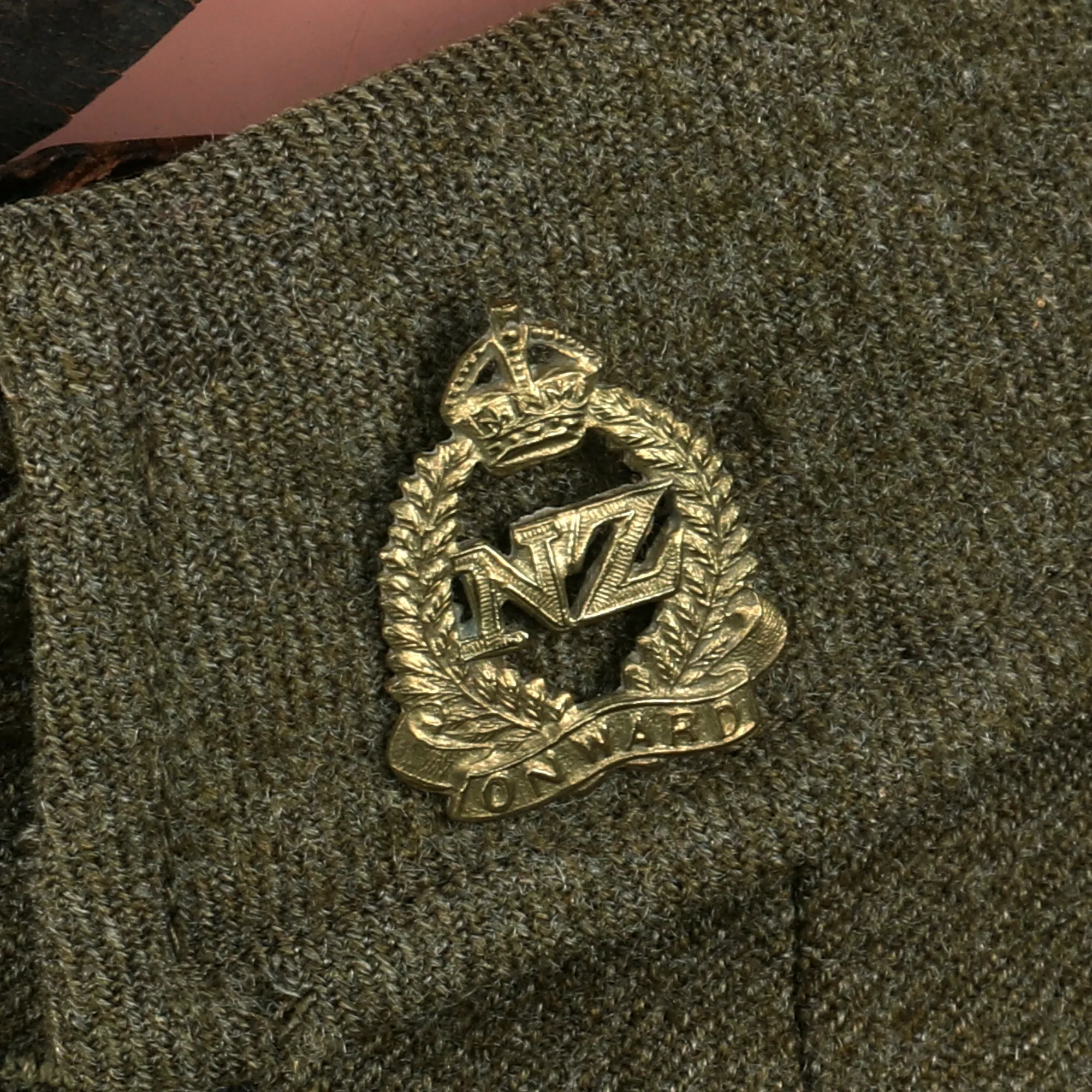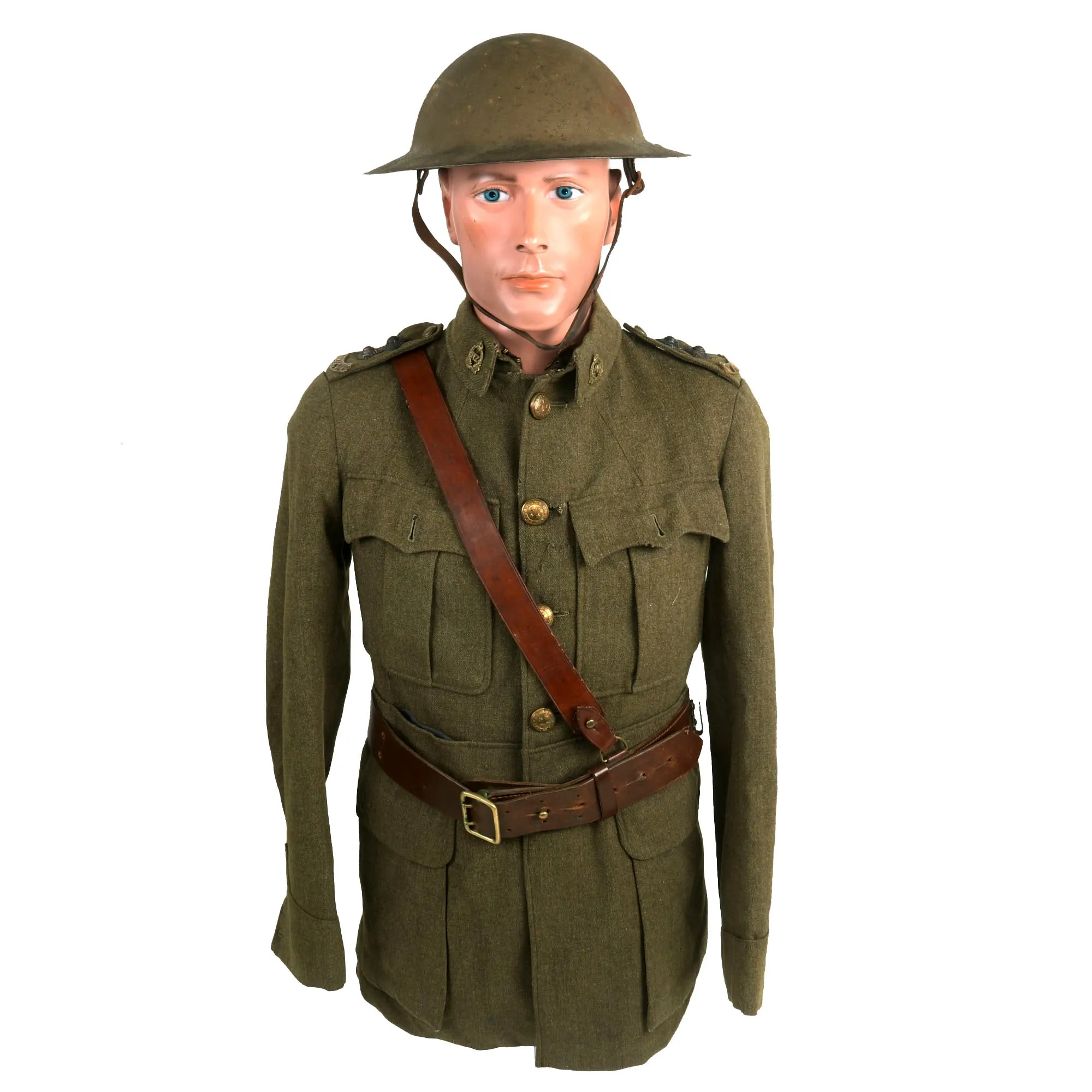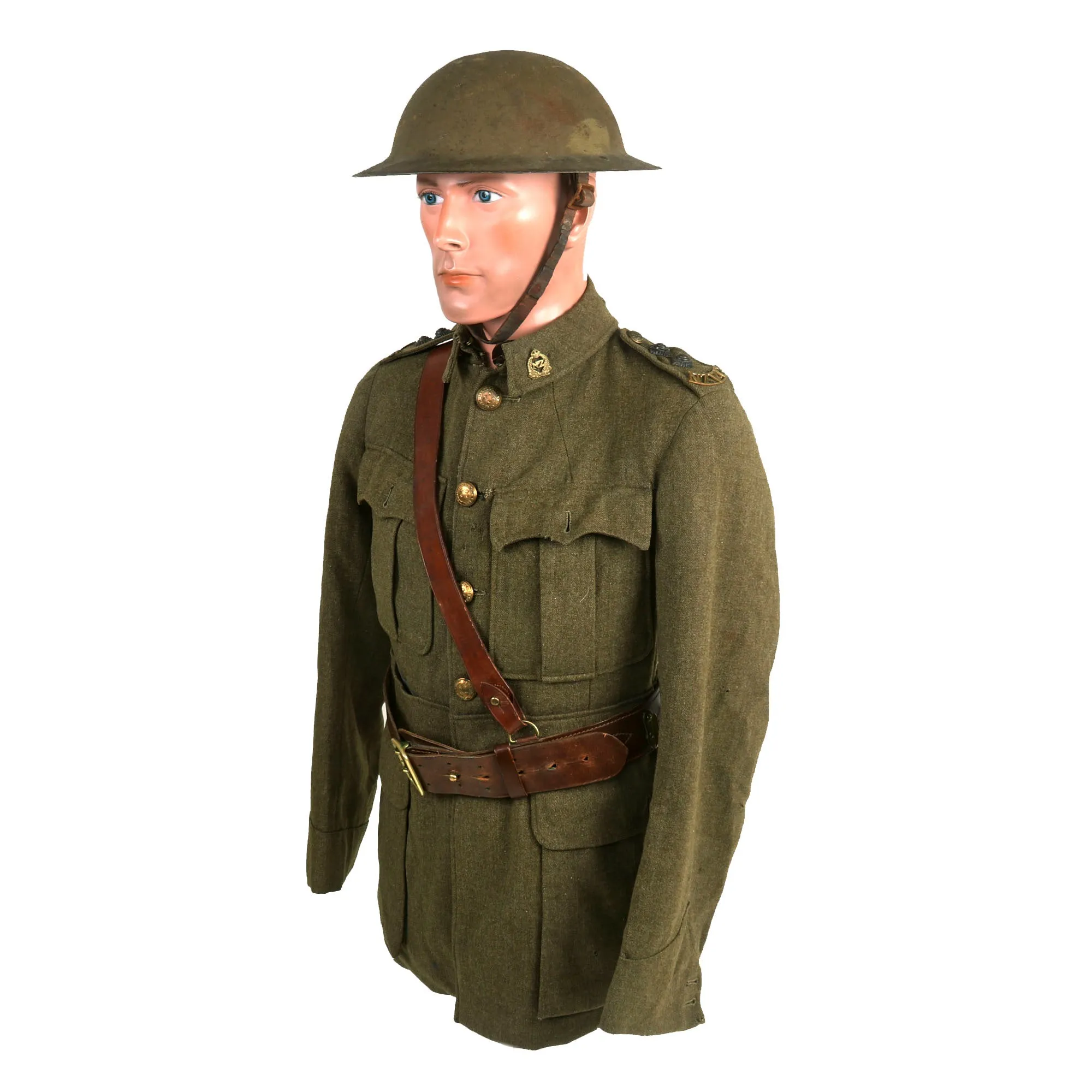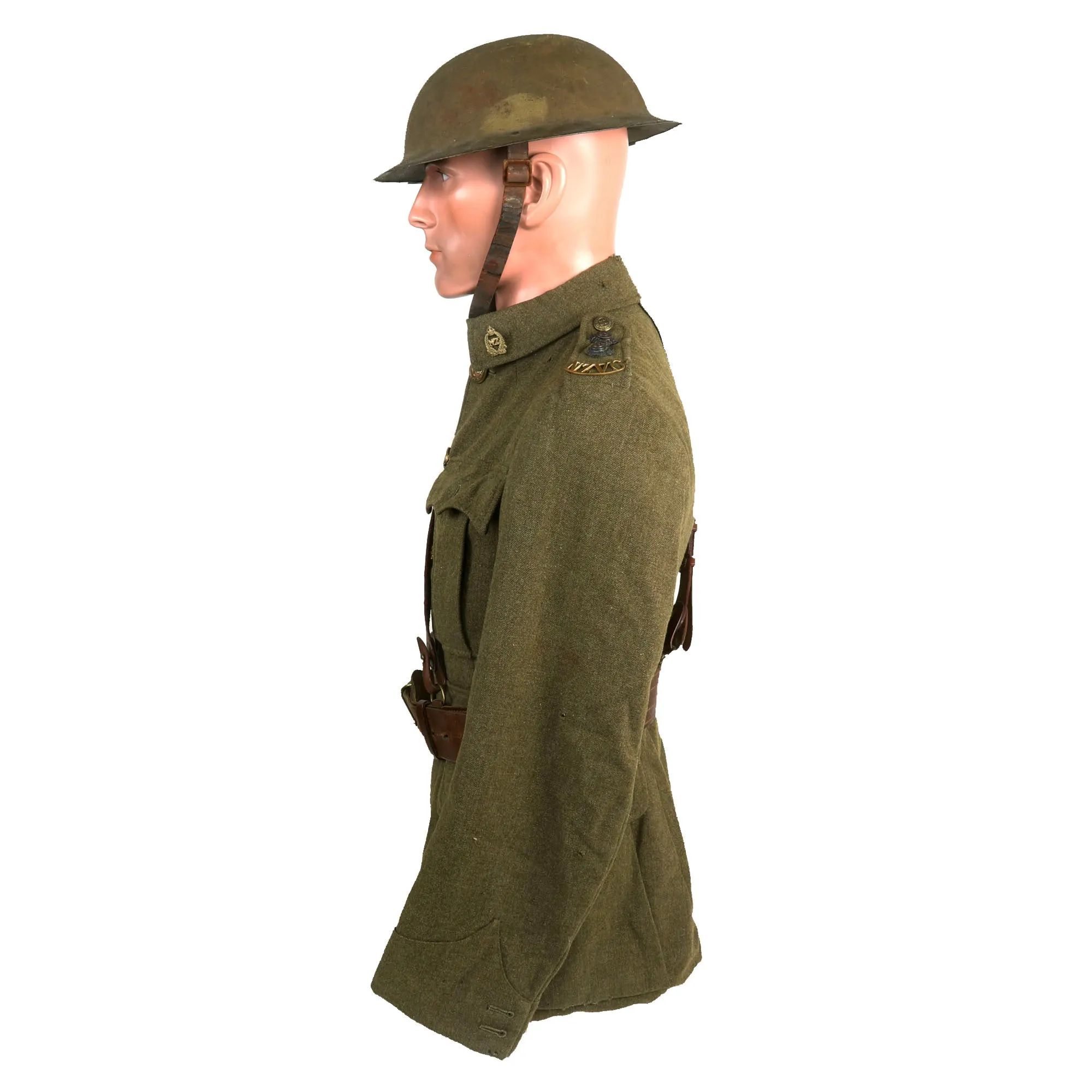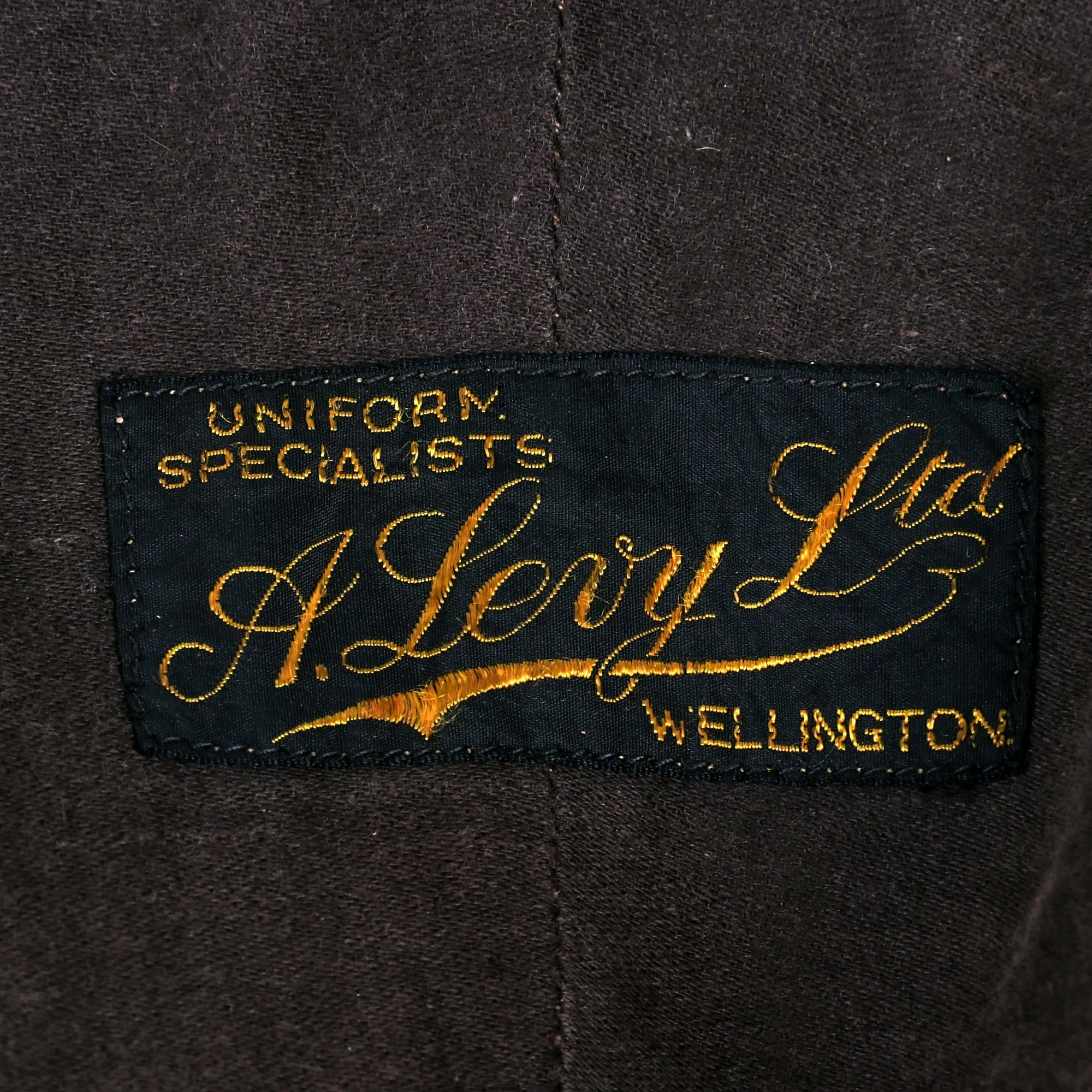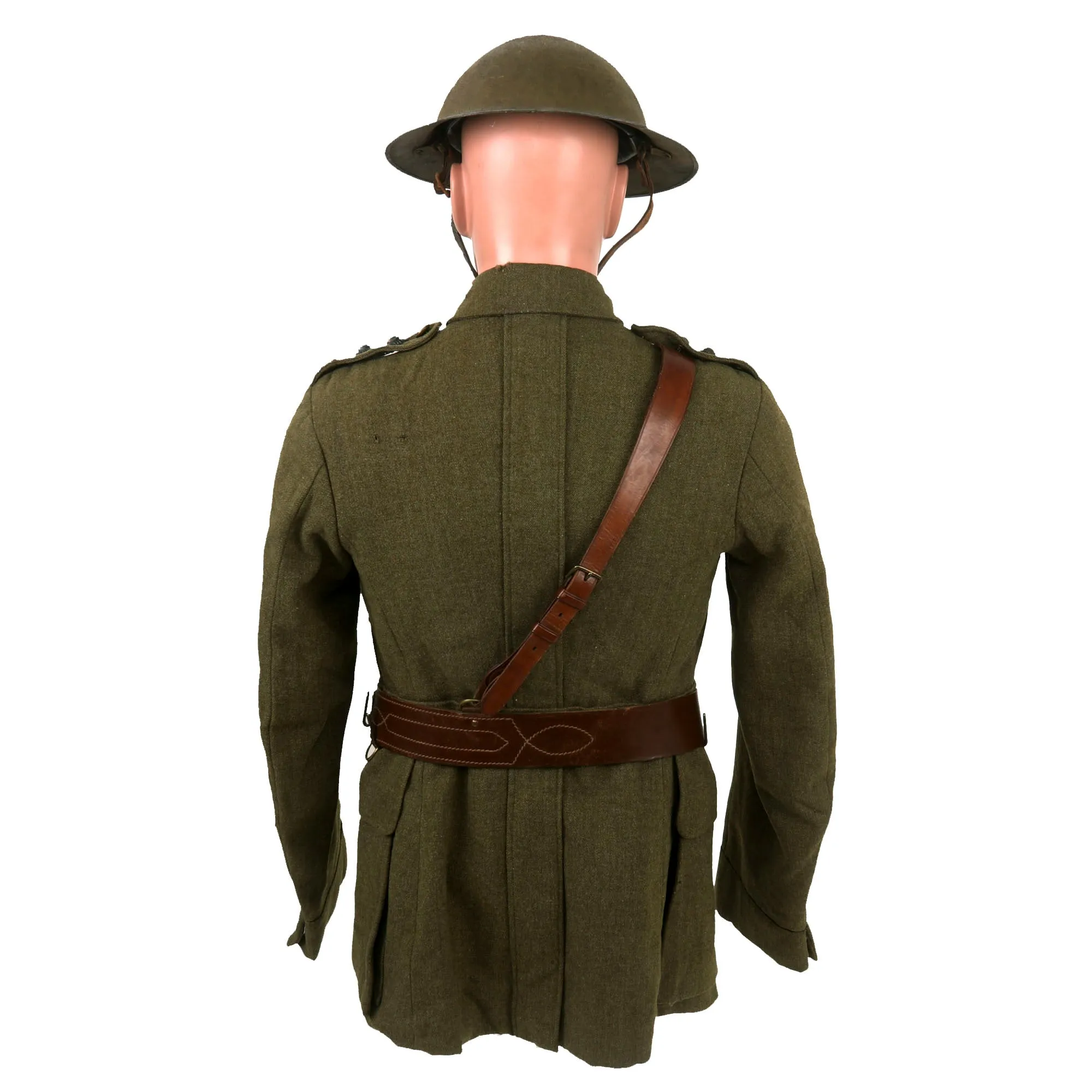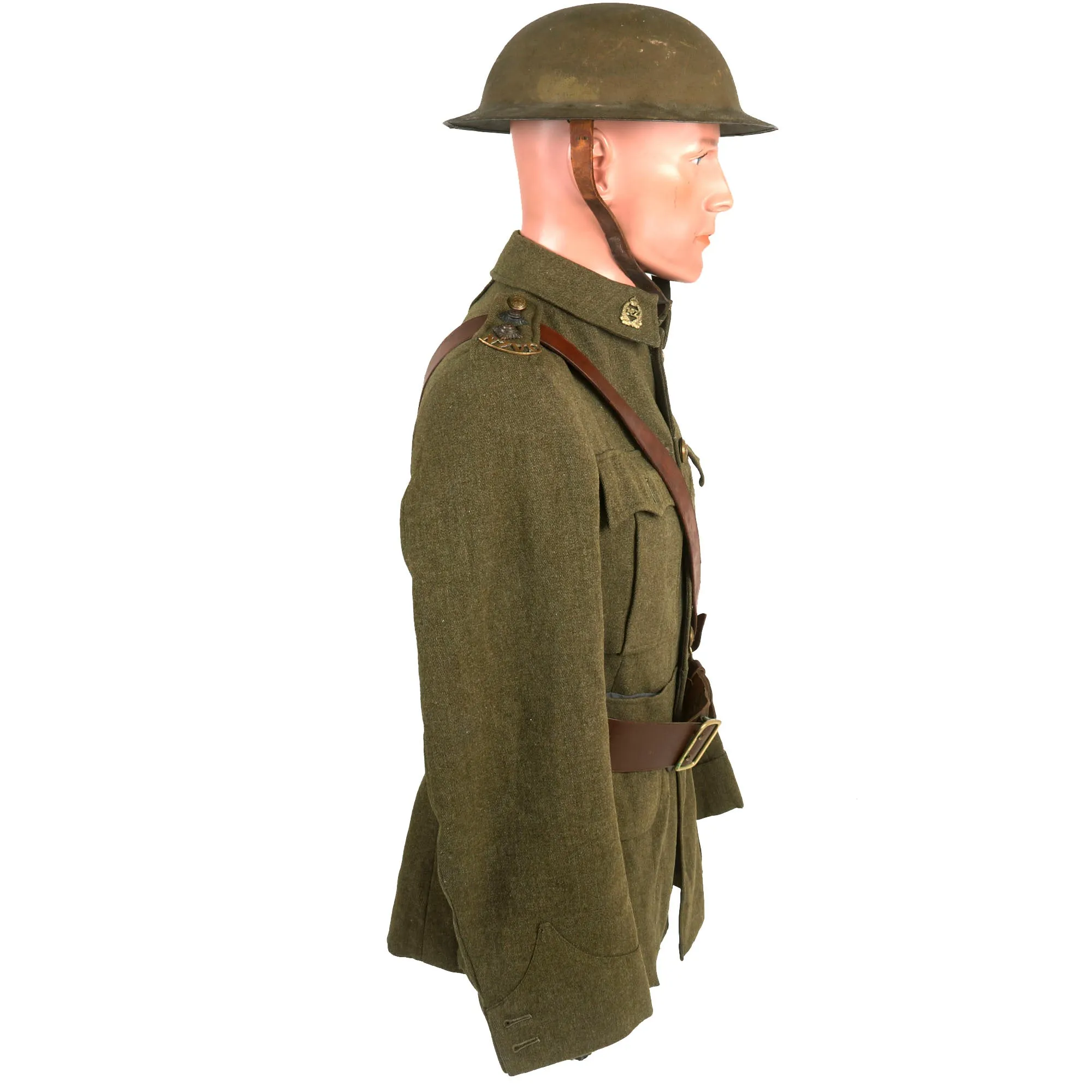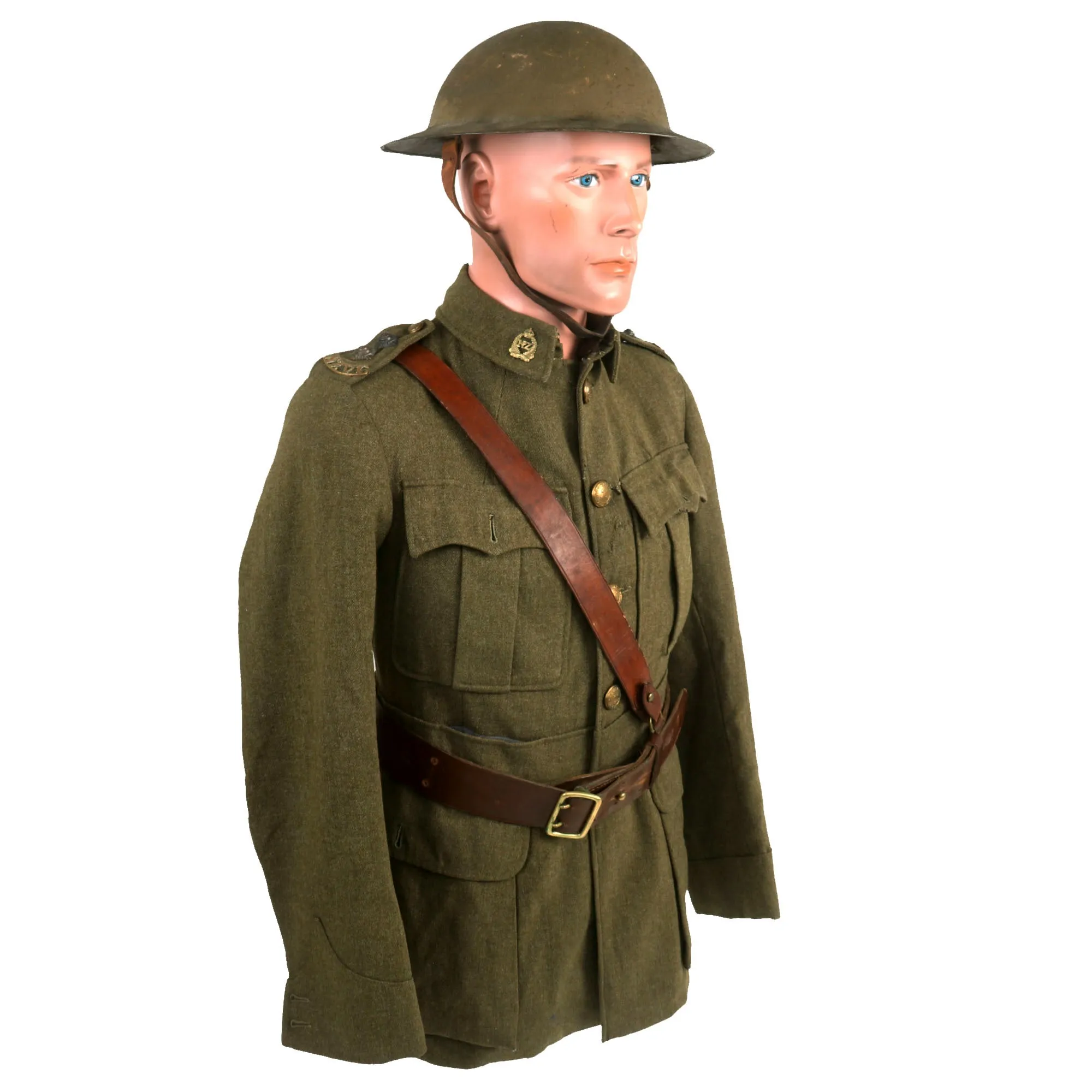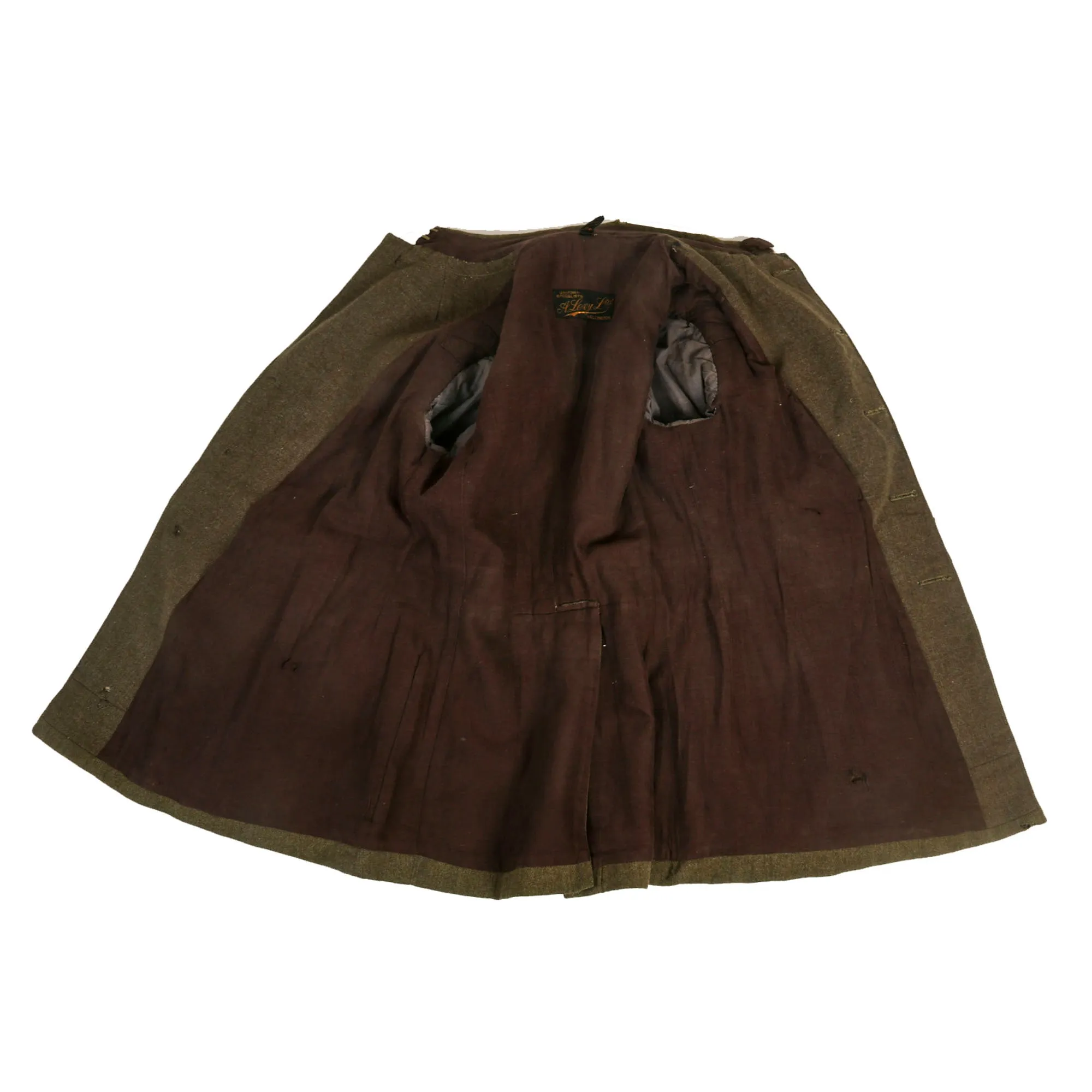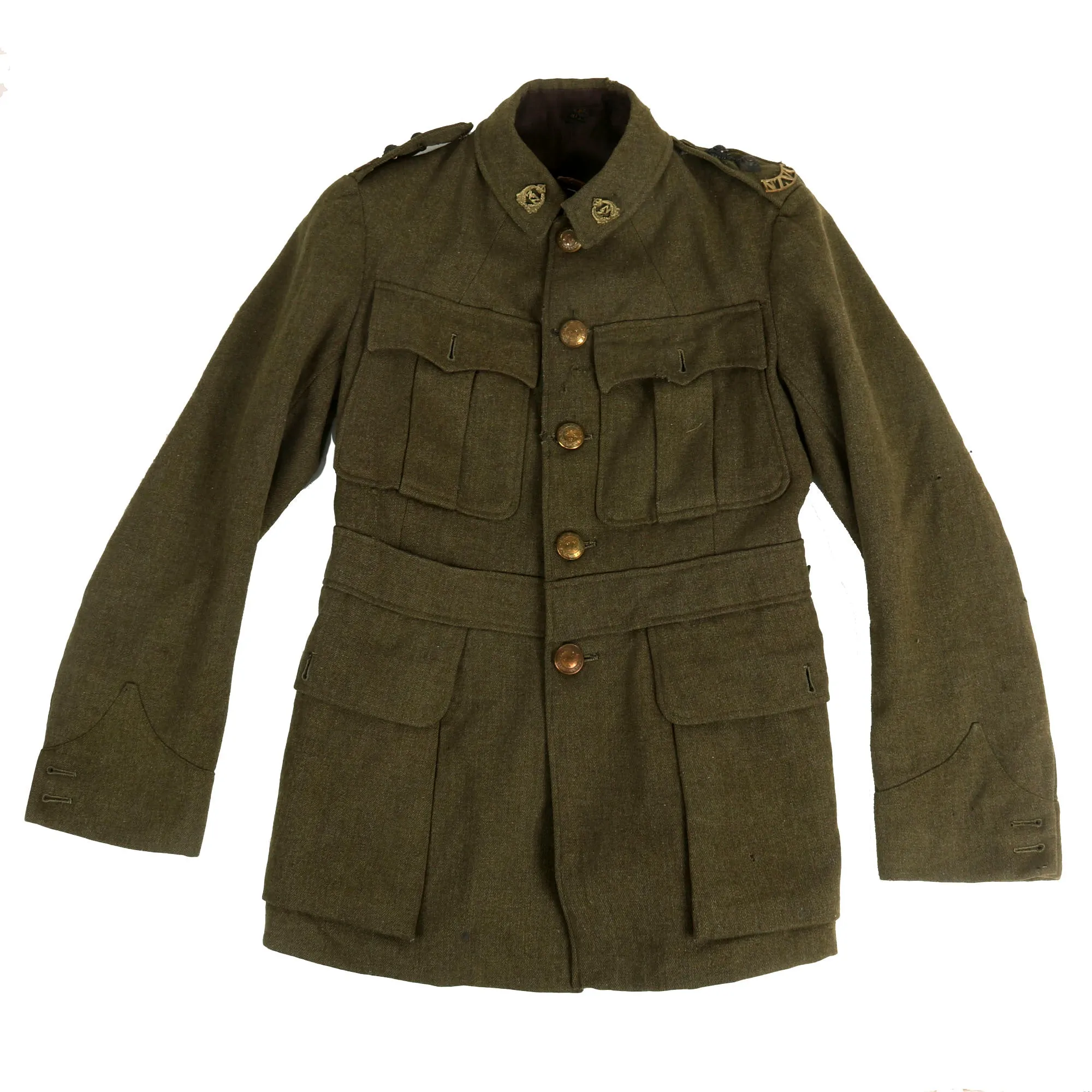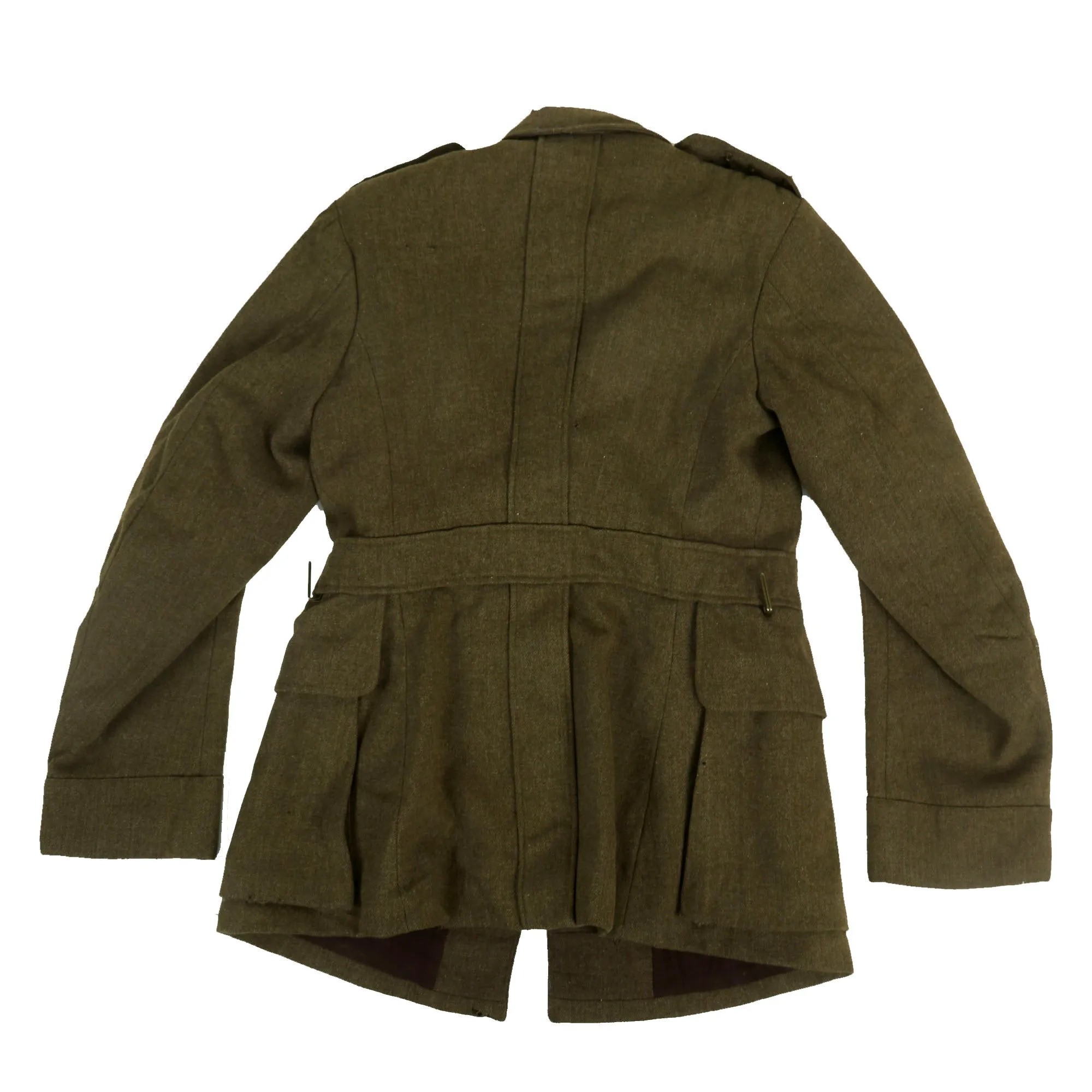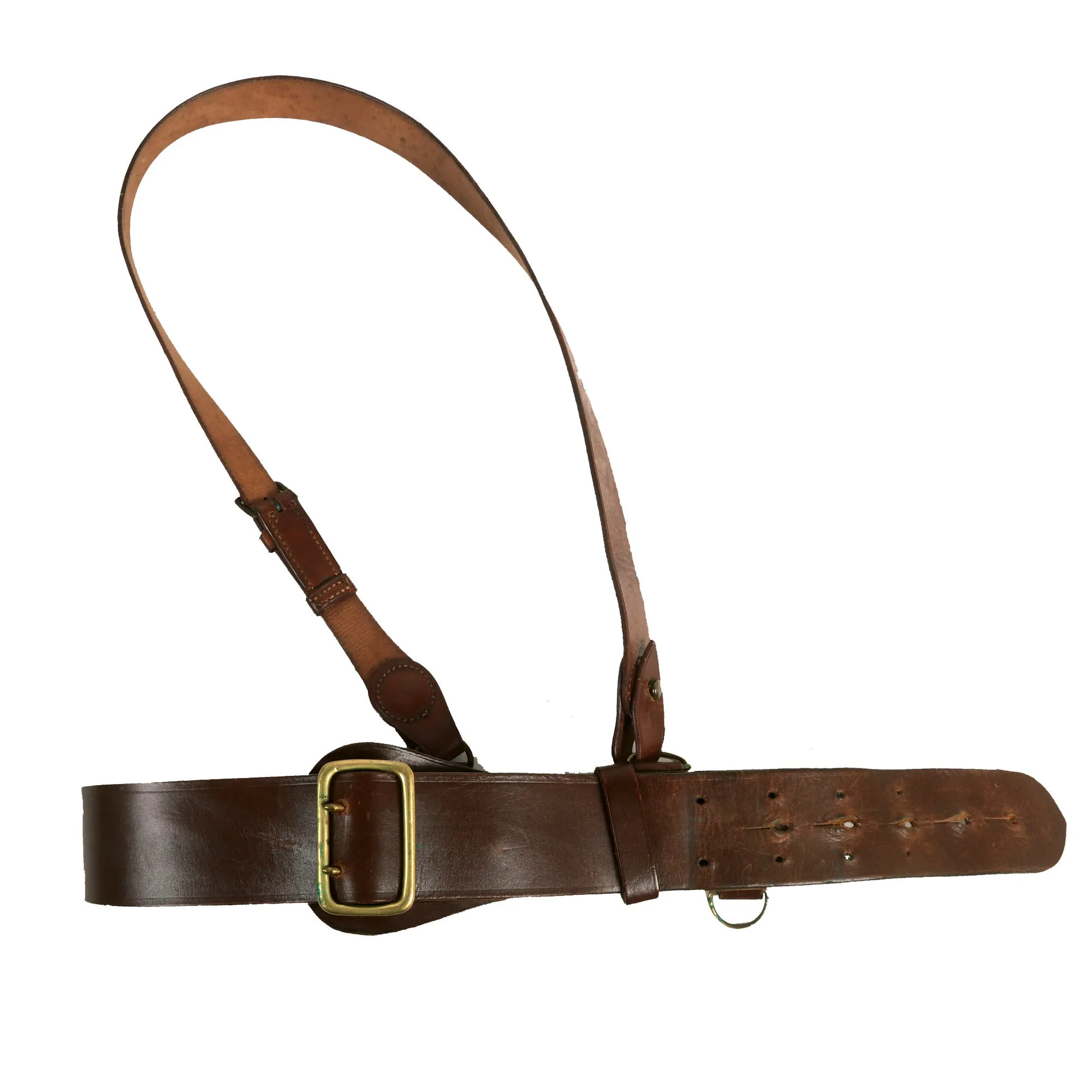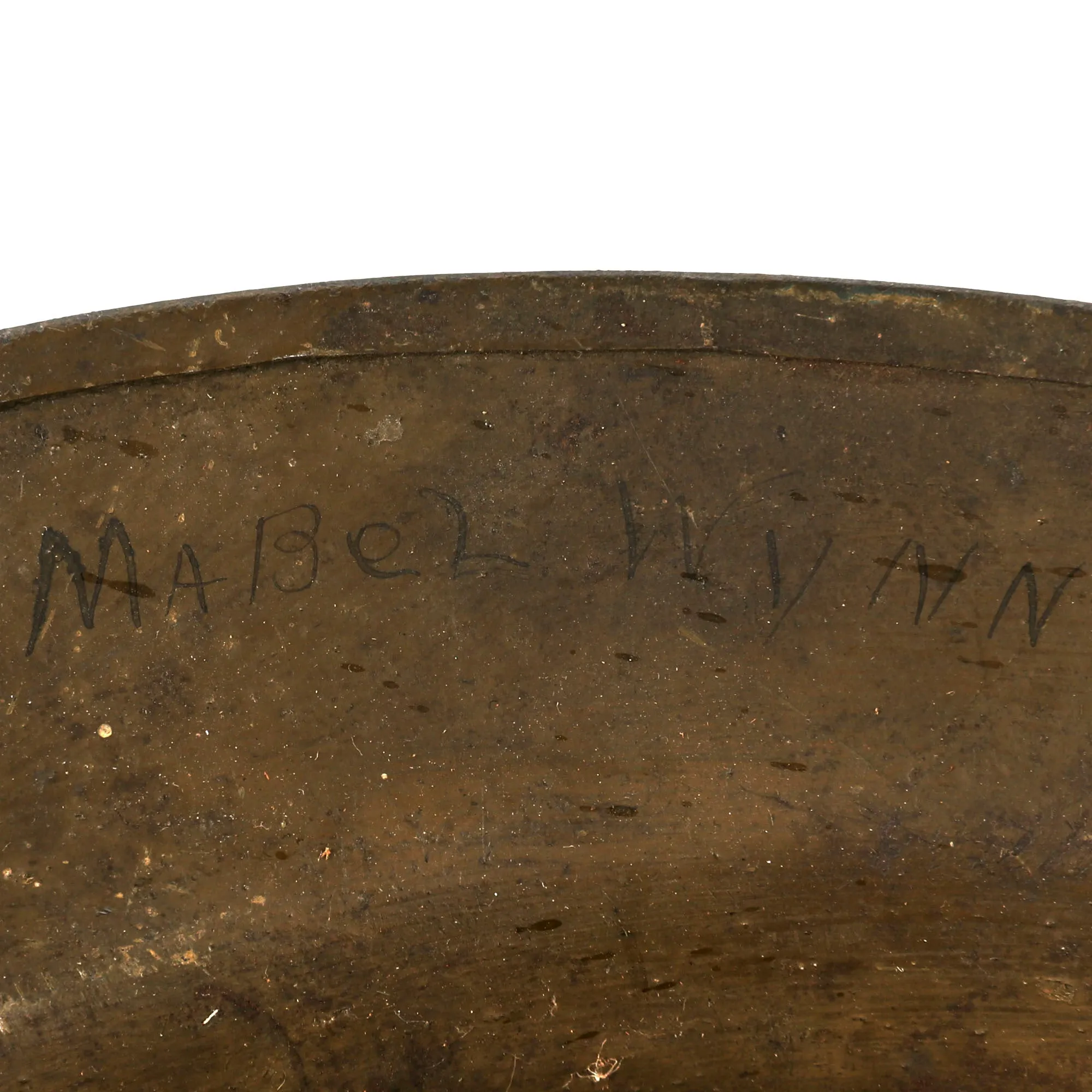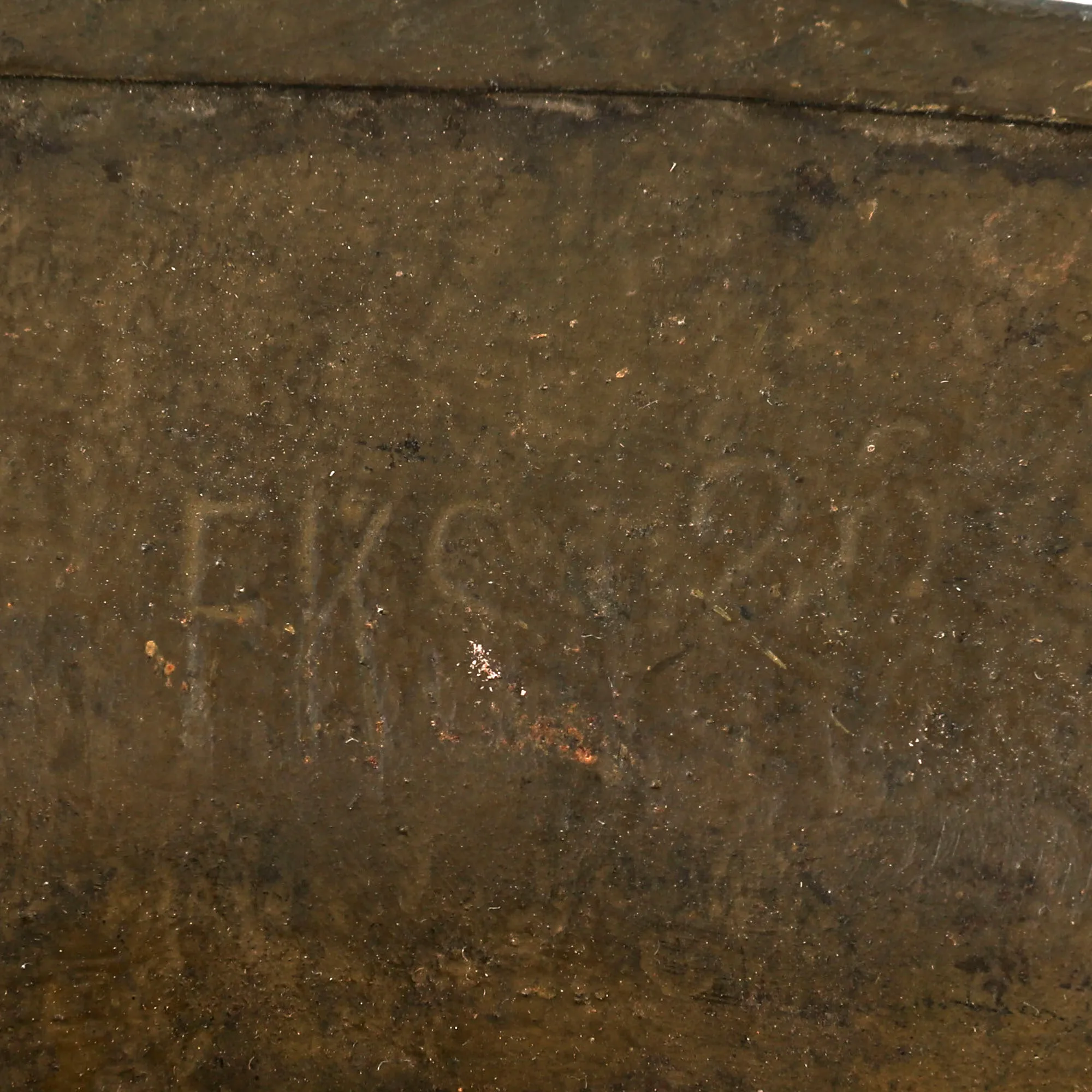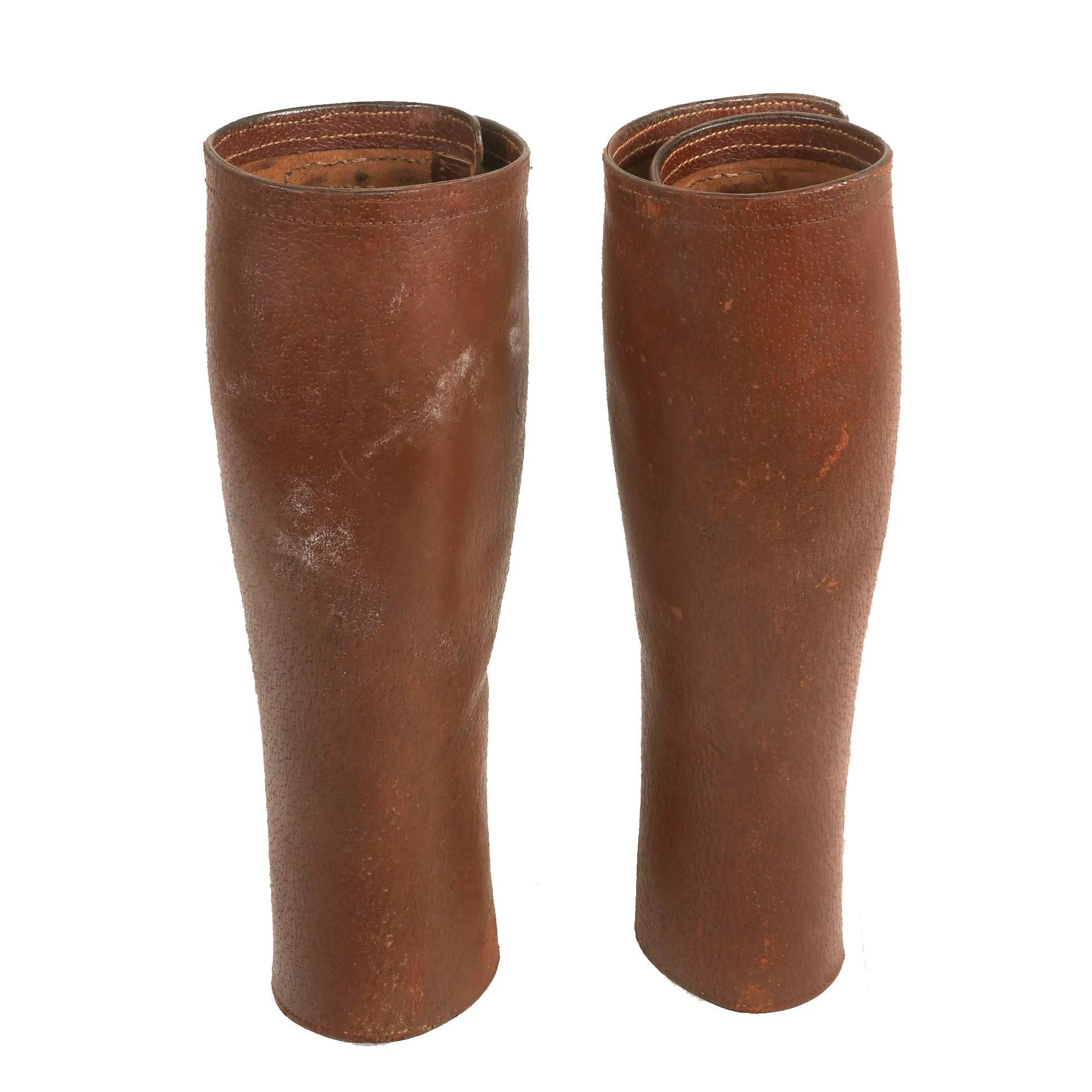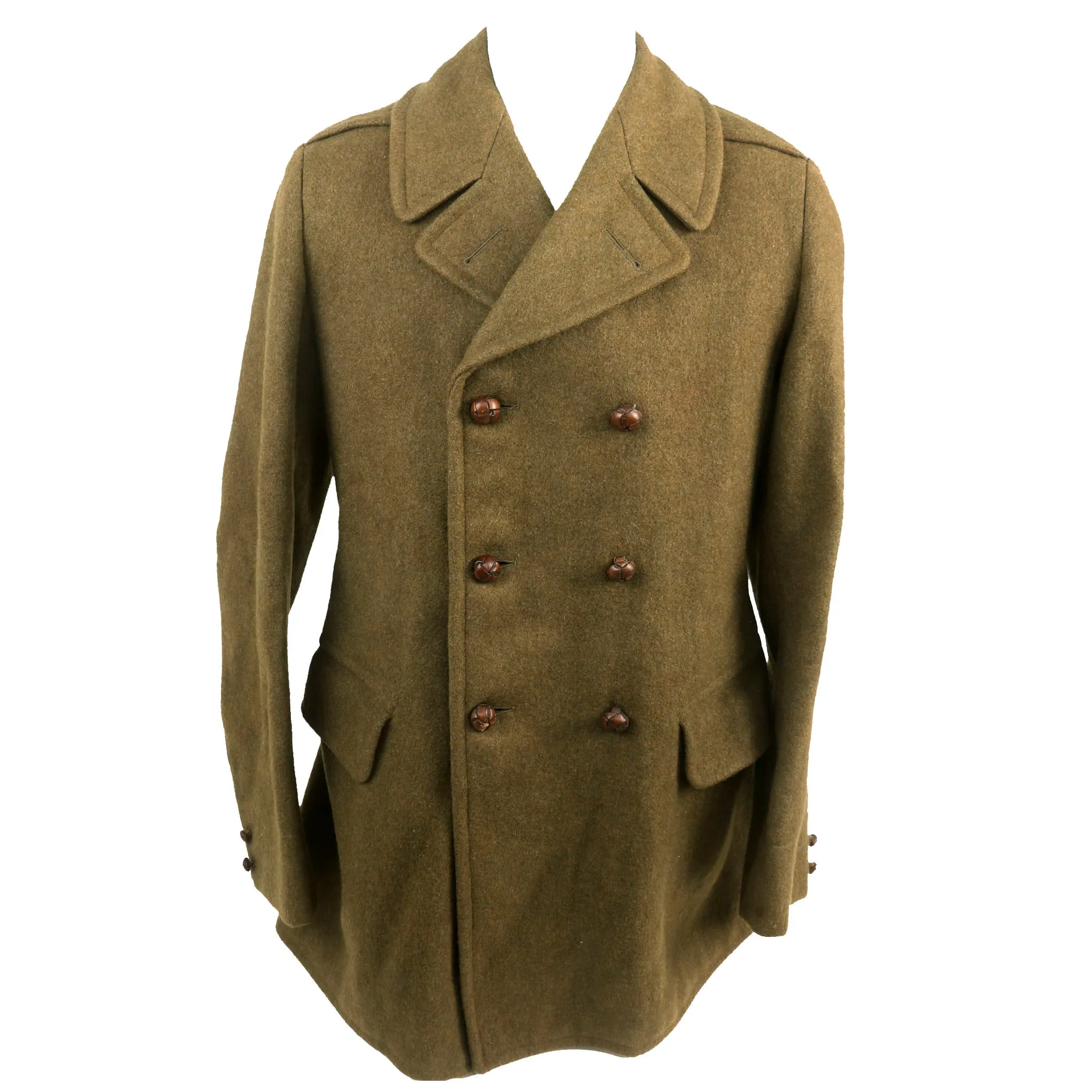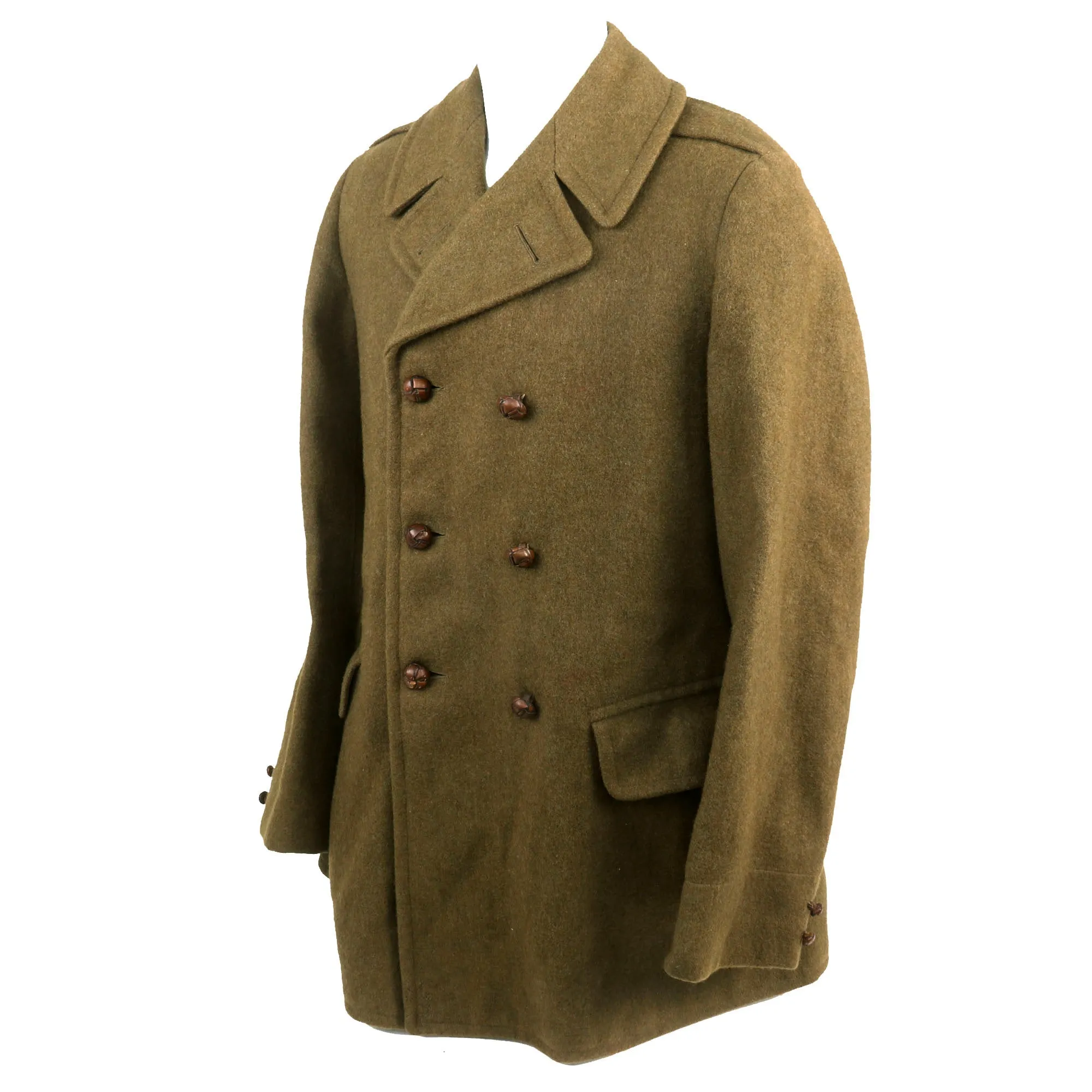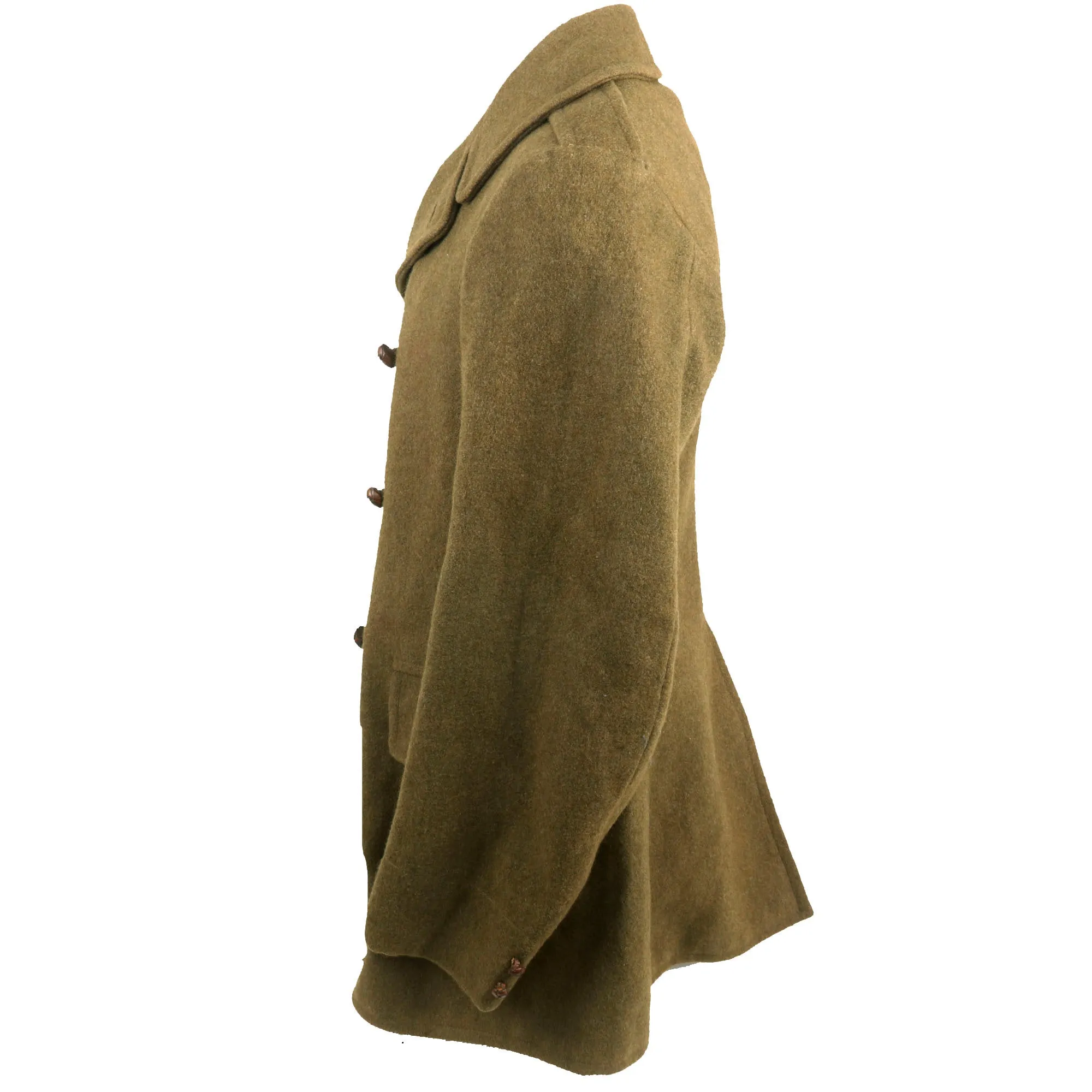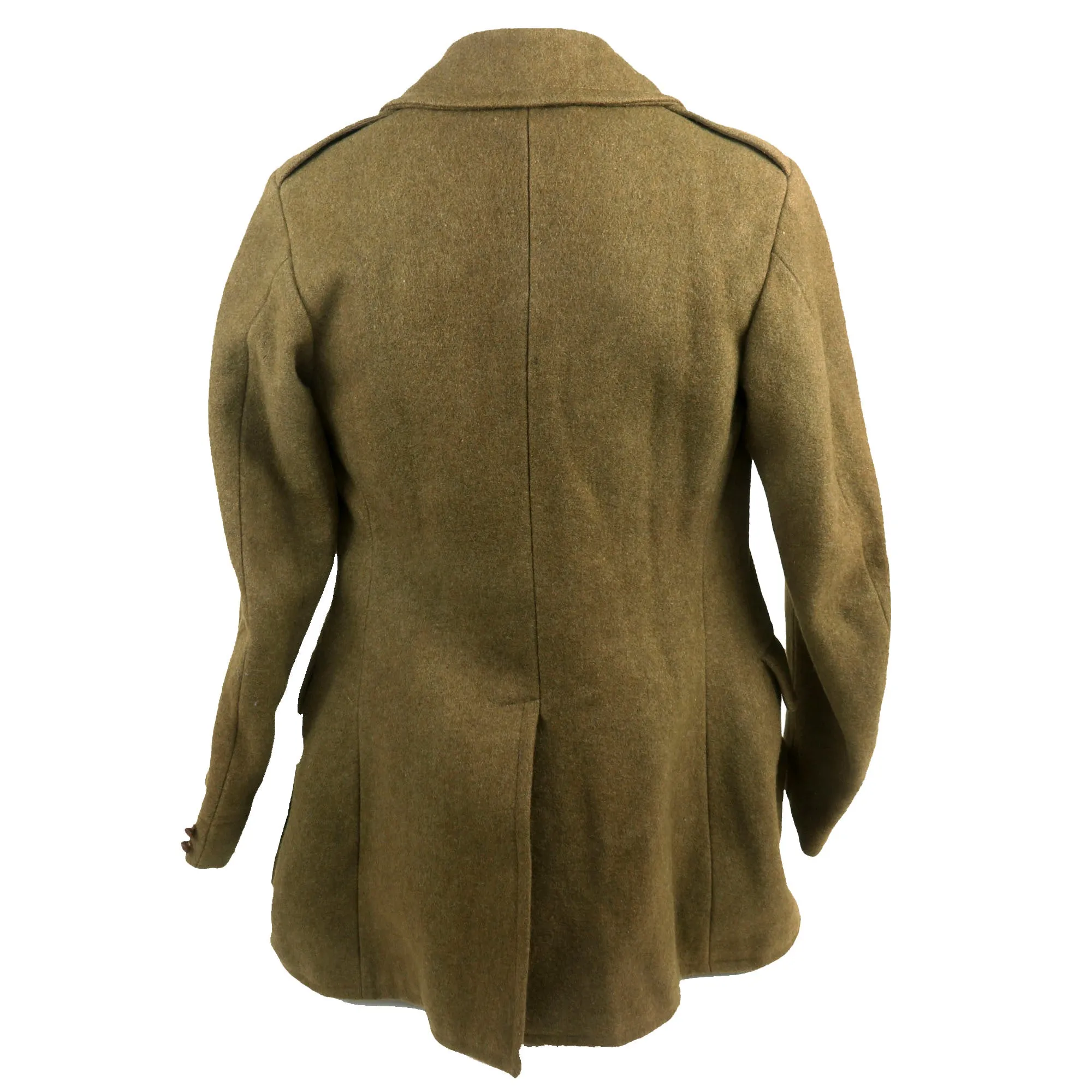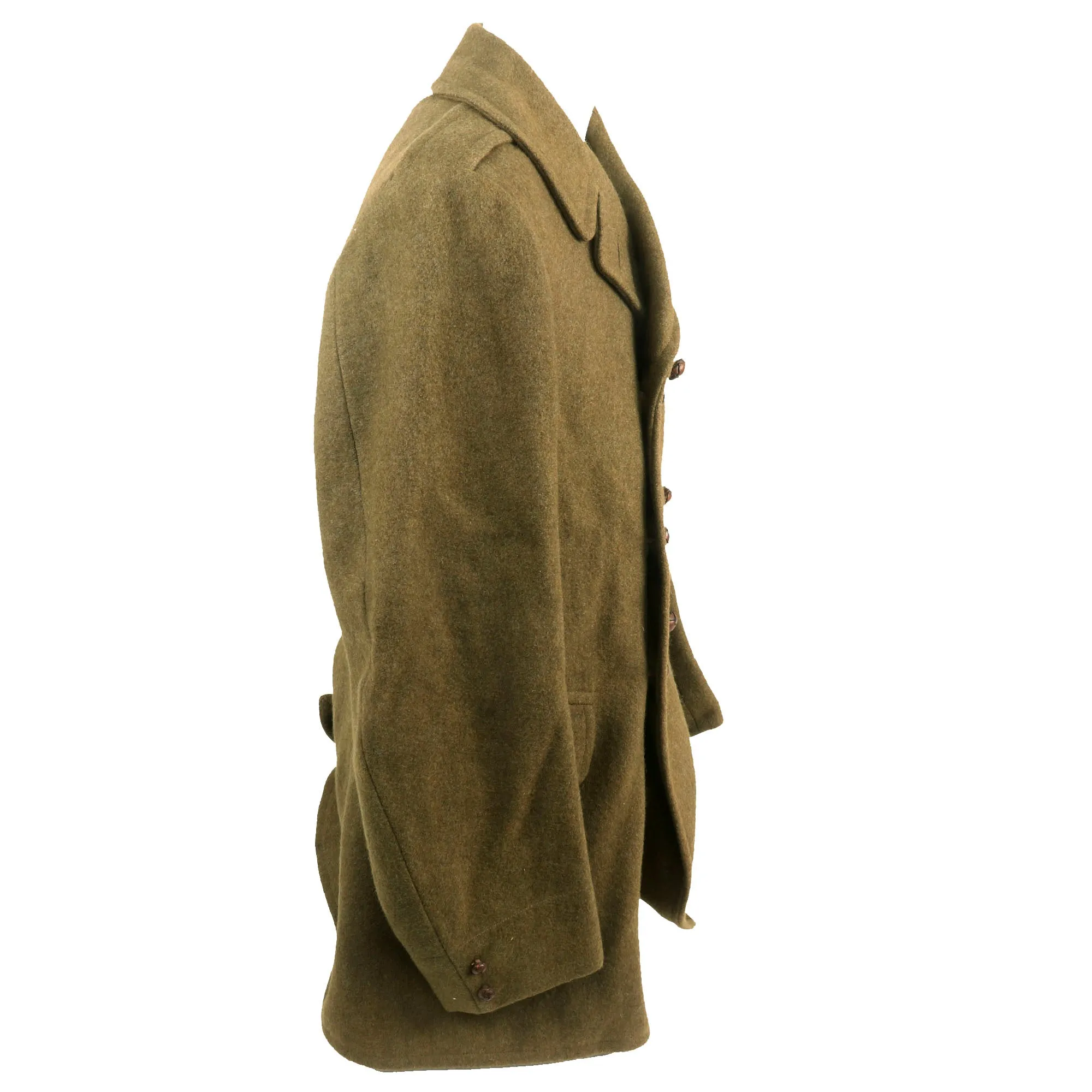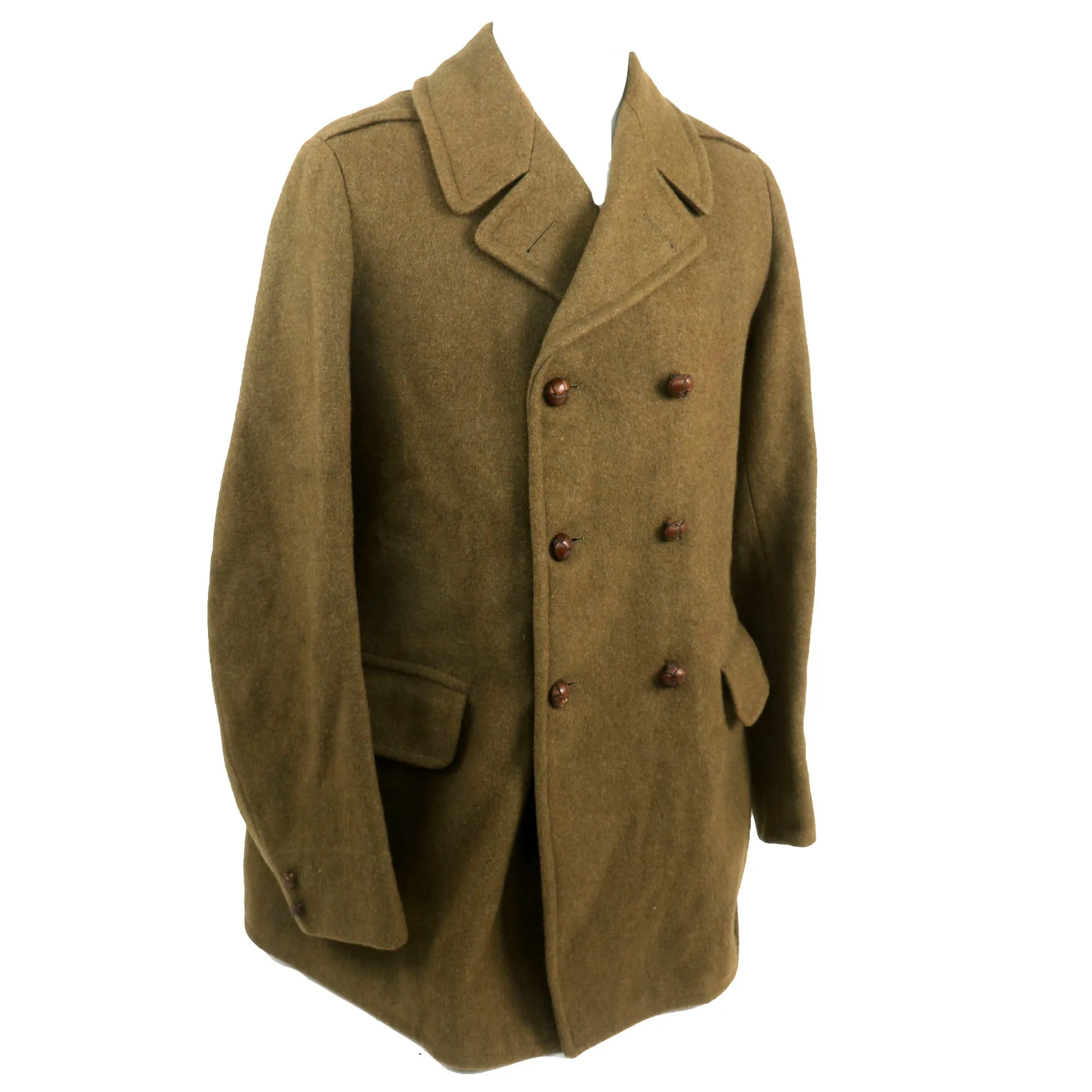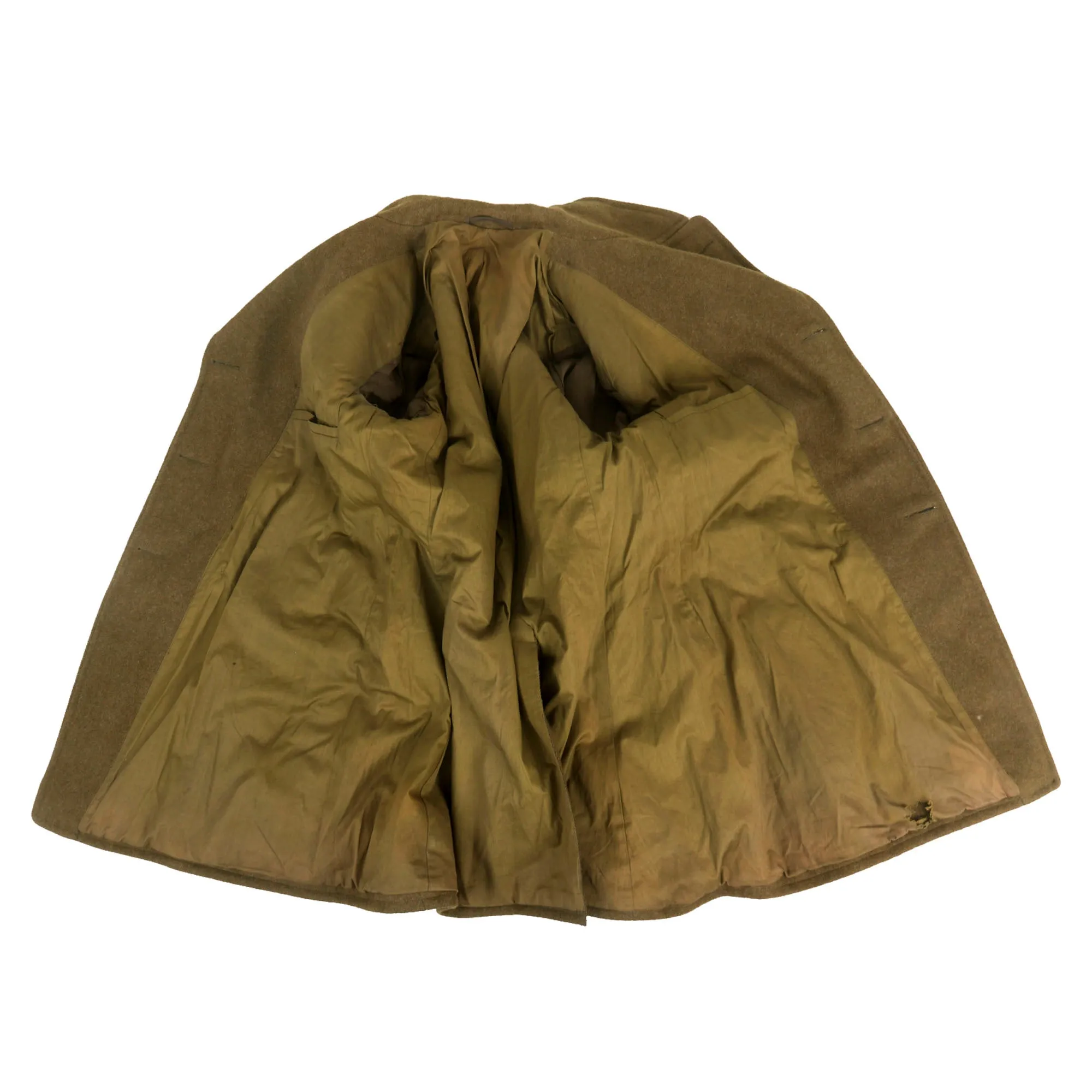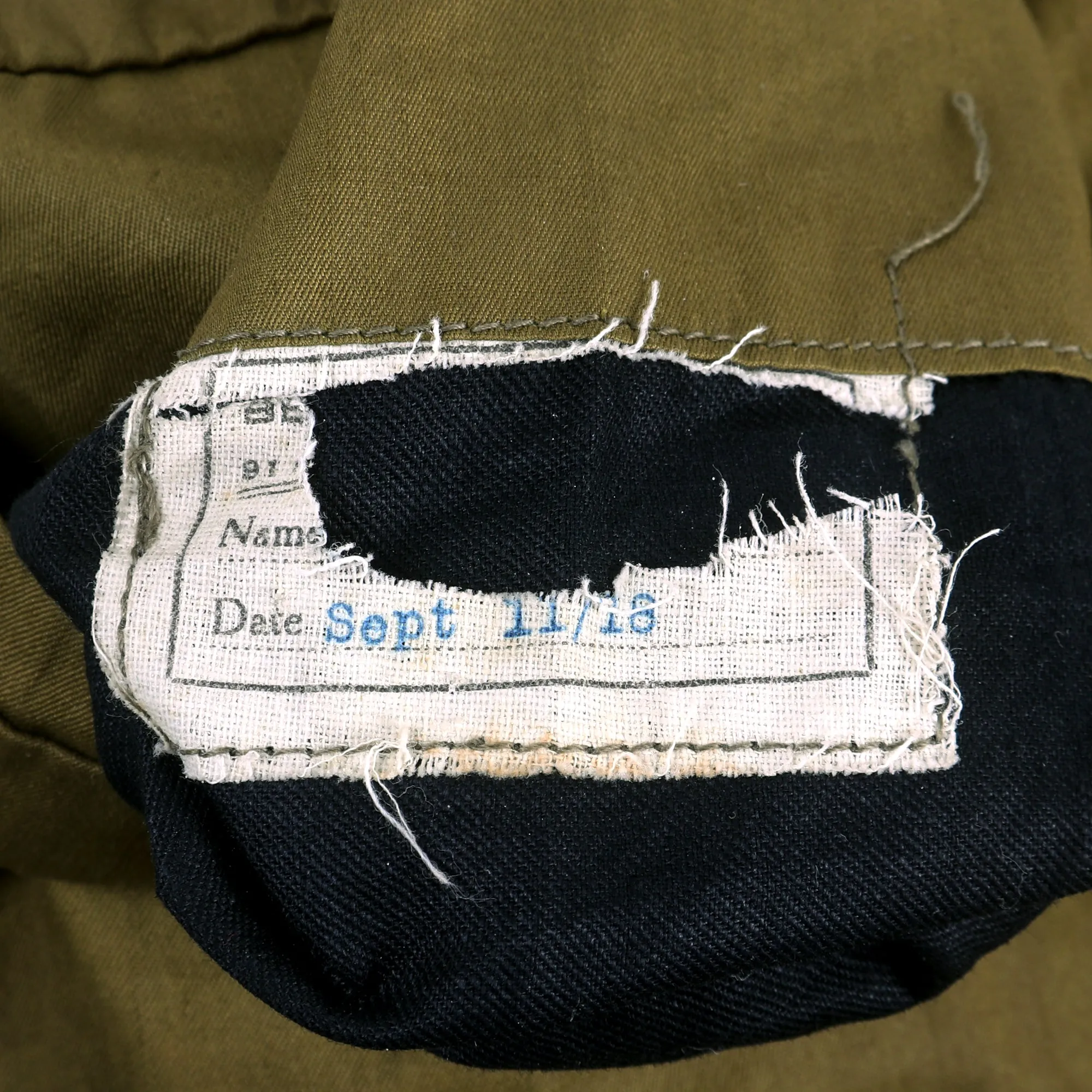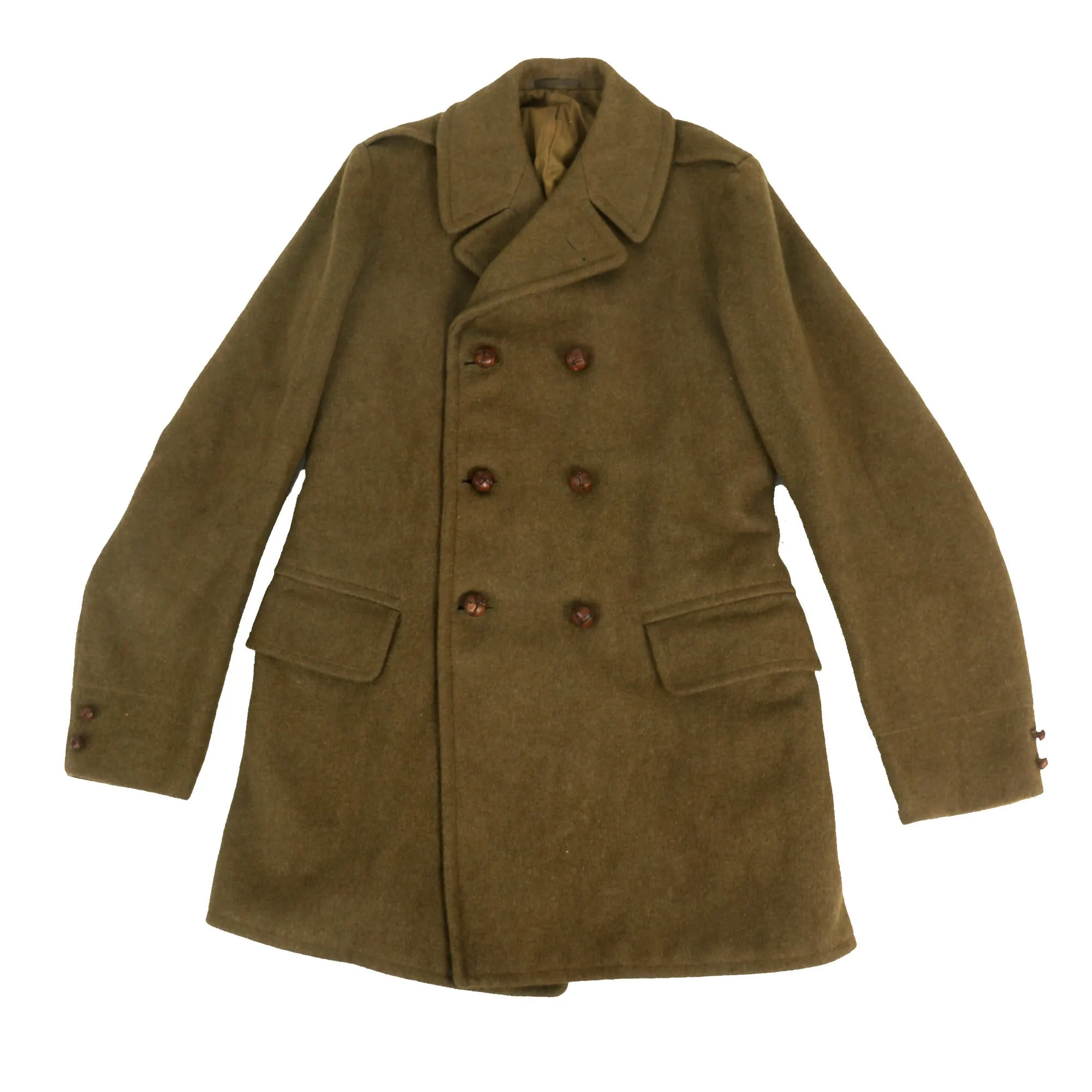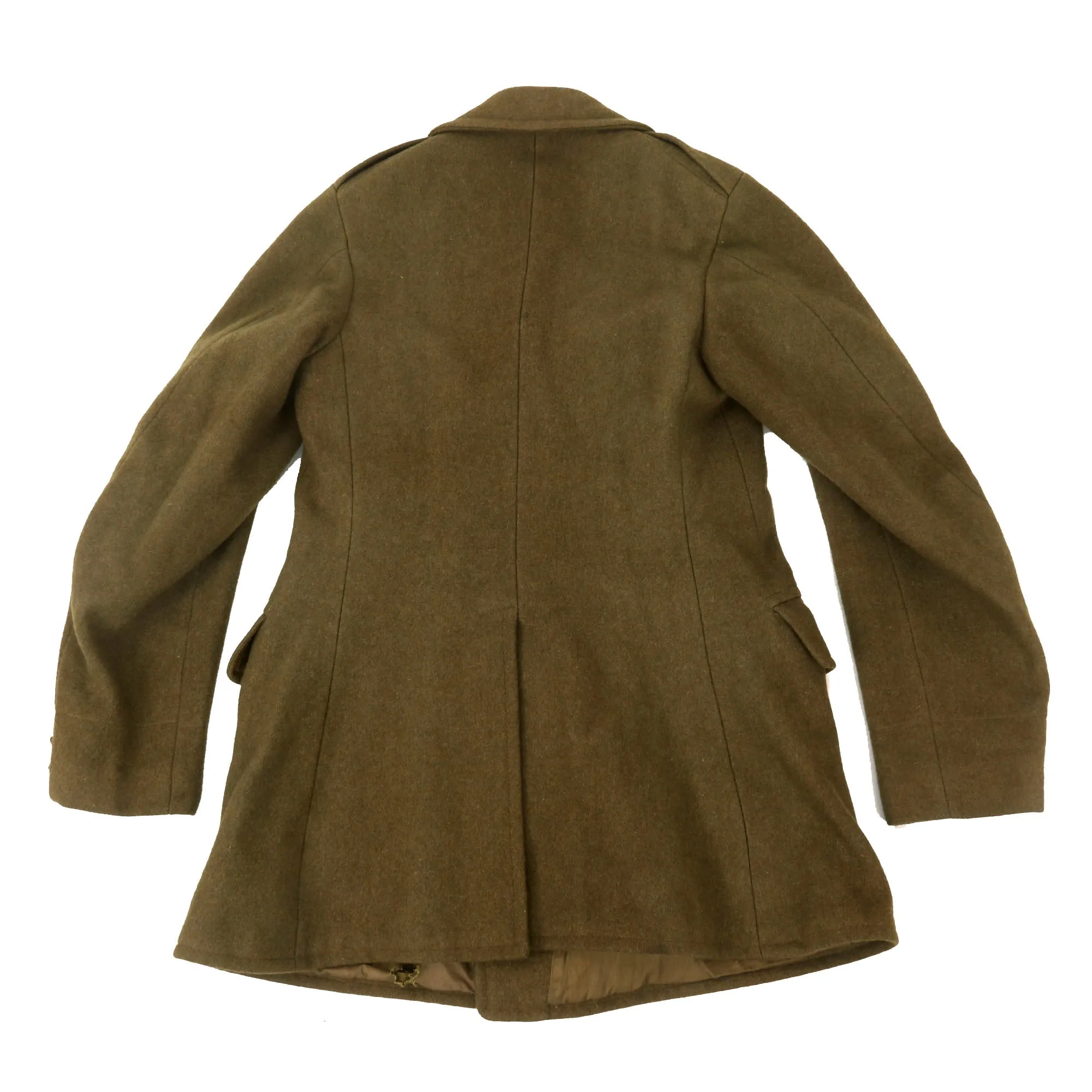Original Item: Only One Available: For offer is one of the rarest uniform groupings we have ever offered. This is a uniform grouping to a Lieutenant in the New Zealand Veterinary Corps. Out of a population of just 1 Million, a staggering 124,000 New Zealanders fought in World War I.
This is an astoundingly rare WWI uniform grouping to a Lieutenant in the New Zealand Veterinary Corps, a very small contingent of the already very small New Zealand military forces that contributed to the ANZAC during World War I.
This very rare grouping includes:
- World War I New Zealand officer’s tunic, with 2 rank pips (rank of Lieutenant) and one NZVC (New Zealand Veterinary Corps) insignia on each shoulder. There are two New Zealand collar insignia on the collar. The uniform has all rare New Zealand Forces buttons. The interior shows that it is a private purchase uniform with a purple liner, the maker being headquartered in Wellington, New Zealand. What a rare and handsome detail!
- British WWI Sam Browne belt on the uniform.
- 1918 British “warm” mounted overcoat. Has rare leather buttons. Has a maker’s tag in the interior pocket dating it September 11th, 1918.
- British-Made Brodie Helmet with a full liner and chinstrap. The chinstrap is very worn showing heavy use.
- Pair of officer’s leather gaiters.
This is one of the rarest uniform groupings we have ever had the pleasure of offering. With how unbelievably rare it is to find anything relating to New Zealand during World War I, We are unsure whether another New Zealand Veterinary Corps uniform will ever pop up in the United States. Don’t miss out on this extraordinarily rare ANZAC Uniform grouping.
New Zealand in World War I
Before the outbreak of war, Prime Minister William Massey had made it clear that New Zealand’s main contribution would be supplying troops to the major theatre of conflict. After 5 August 1914, preparations to do this began rapidly. But before New Zealand could commit its troops to Europe, any direct threat in the Pacific region had to be removed. The first objective was to capture German Samoa.
The Germans had established a wireless station at Apia in Samoa. On 6 August, the British informed the New Zealand government that the capture of German Samoa would be a ‘great and urgent Imperial service’. Australian intelligence advised that a German-officered constabulary of around 80 men and a gunboat protected the station. This was no match for the New Zealand Expeditionary Force (NZEF) of about 1400 men, led by Colonel Robert Logan, which achieved its objective without resistance on 29 August. This was the second German territory, after Togoland in Africa, to fall to the Allies in the First World War.
On 23 August, Japan declared war on Germany, assuring the Allies of naval dominance in the Pacific. The Japanese quickly set about capturing German territories north of the Equator.
After a delay while a stronger naval escort could be arranged, the main body of the NZEF left New Zealand on 16 October 1914. Most thought they were headed to fight in France but this changed when the Ottoman Empire (now Türkiye) entered the war on the side of the Central Powers on 5 November.
New Zealand and Australian troops disembarked in Egypt to complete their training. From here, they headed to the Gallipoli Peninsula, Türkiye, in April 1915. Some 2779 New Zealanders died during this unsuccessful campaign.
After their evacuation from Gallipoli, New Zealand troops were sent to the Western Front (France and Belgium). The Gallipoli campaign and the birth of the Anzac legend have captured the imagination of generations of New Zealanders. But it is on the killing fields of the Western Front that most New Zealanders saw action and where most of them died – almost 12,500 in total.
In addition, a mounted rifles brigade participated in the Sinai–Palestine campaign. A small number of New Zealanders served with British naval and air forces, while others sailed in British and locally owned merchant ships.
New Zealand’s wartime strategy was to sustain the NZEF as its main contribution to the war effort while also keeping up the food production that was vital to the survival of Britain. Reinforcement drafts left New Zealand at regular intervals throughout the war.
New Zealand Veterinary Corps
The New Zealand Veterinary Corps formed in 1907 became truly active at the outbreak of the First World War. They were first required to oversee the purchase of suitable horses, and their transport to Europe and North Africa, while also training others to care for the horses. A total of 9,988 horses were shipped overseas during WWI with many passing through a camp just outside Palmerston North, which was a base for receiving gifted and purchased horses.
The corps was made up of a small number of qualified veterinarians as commissioned officers and comprised farriers, groomers, blacksmiths and more. Mobile and hospital-based veterinarians served in Egypt, Sinai and Palestine as well as on the Western Front at Gallipoli, the Somme, Messines and Passchendaele. Donkeys, mules and military dogs also required veterinary attention.
The New Zealand Veterinary Corps sent three veterinarians to Egypt with the Main Body in October 1914. They were not attached to any particular unit. In late 1914 two ‘Veterinary Sections’ were formed. These were 115-man hospital units, one each for the infantry and the mounted rifles. Two 28-man ‘Mobile Veterinary Sections were also formed in New Zealand. These units were sent to Egypt to join the rest of the forces in December, and served as part of the New Zealand forces at Gallipoli.
In January 1916 the two Veterinary Sections (hospital units) were disbanded and absorbed into the two Mobile Veterinary Sections. No. 1 New Zealand Mobile Veterinary Section served with the New Zealand Division on the Western Front, while No. 2 served in Sinai and Palestine with the Mounted Brigade.




